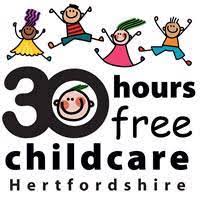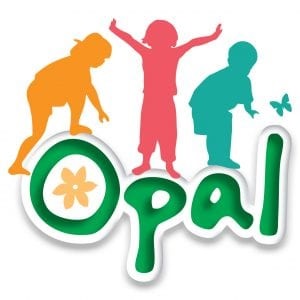Design Technology
Intent
At St Philip Howard, Design and Technology provides children with the opportunities to solve real issues within different contexts. ‘Catholic Social Teaching is based on the belief that God has a plan for creation, a plan to build his kingdom of peace, love and justice.’ Through our scheme, children are encouraged to be creative and develop their skills throughout the D&T curriculum and build upon knowledge each year. D&T starts early within St Phillip Howard and is interwoven throughout other areas of the national curriculum, including Early Years.
There are four key aspects that the children will focus upon;
- Food and nutrition
- Construction
- Textiles
- Mechanisms
|
Design Technology |
||||||
|
Year Group |
Autumn 1 |
Autumn 2 |
Spring 1 |
Spring 2 |
Summer 1 |
Summer 2 |
|
RE |
Creation and covenant |
Prophecy and Promise |
Galilee to Jerusalem |
Desert to Garden |
To the ends of the earth |
Dialogue and Encounter |
|
Nursery |
Self portraits - exploring colour |
Using natural resources to create prints |
Explore different materials - what can they be used for? |
Explore colour and colour mixing |
The use of shapes to create artwork - Kandinsky |
Using water to create art |
|
Reception |
How can we use our bodies to make art? |
How can we build, explore materials and marks? |
How can we explore colour? |
How can we use our imaginations? |
How can we explore 3D materials? |
What can we see? |
|
Art to be in alternating half terms. Class teachers decide which half term to teach each subject. |
||||||
|
Year 1 |
Mechanisms Making a moving story book |
Textiles Puppets |
Cooking and nutrition
Smoothies |
|||
|
Year 2 |
Cooking and nutrition Balanced diet |
Structures Baby bear’s chair |
Textiles Pouches |
|||
|
Year 3 |
Textiles Cross stitch and applique Egyption collars or cushions |
Mechanical Systems Pneumatic Toys |
Cooking and nutrition Eating Seasonally |
|||
|
Year 4 |
Electrical Systems Torches |
Cooking and nutrition Adapting a recipe |
Structures Pavilions |
|||
Year 5 |
Mechanical Systems Making a moving story book |
Cooking and nutrition Developing a recipe |
Textiles Stuffed Toys |
|||
Year 6 |
Cooking and nutrition Come dine with me |
Structures Playgrounds |
Electrical systems Steady hand games |
|||
Throughout each area, children have the opportunities to design, make and evaluate their chosen product of choice. They are encouraged to show resilience through each task and problem solve if their product does not go to plan. Children are exposed to different engineers, designers and chefs and use this inspiration to create their own adapted product.
Implementation
All DT follows the National Curriculum guidance of Design, Make and Evaluate. Children create for a purpose. At St Philip Howard, children are exposed to the 4 key aspects of D&T throughout each key stage. During the designing process, children are encouraged to look for inspiration from other products or ideas around them. They must design with a purpose in mind. They are provided with the option of a variety of tools to work with. Children then make and evaluate their product. They pinpoint where the task went well and where it could have been improved.
D&T is interwoven throughout various curriculum areas in St Philip Howard. Children are taught D&T once a term using the Kawpow scheme.
It is especially apparent within R.E teaching. Children are encouraged to show creativity through their religious studies and use their design knowledge to support this. Examples may include the children creating their props for their productions or creating a cross in Forest School.
Forest School is another example of D&T being used outside of the classroom. Children use nature found around them to design and create products for habitats, such as bird nests.
Key Stage 1-
Design
- design purposeful, functional, appealing products for themselves and other users based on design criteria
- generate, develop, model and communicate their ideas through talking, drawing, templates, mock-ups and, where appropriate, information and communication technology
Make
- select from and use a range of tools and equipment to perform practical tasks [for example, cutting, shaping, joining and finishing]
- select from and use a wide range of materials and components, including construction materials, textiles and ingredients, according to their characteristics
Evaluate
- explore and evaluate a range of existing products
- evaluate their ideas and products against design criteria
Technical knowledge
- build structures, exploring how they can be made stronger, stiffer and more stable
- explore and use mechanisms [for example, levers, sliders, wheels and axles], in their products.
Cooking and Nutrition
- use the basic principles of a healthy and varied diet to prepare dishes
- understand where food comes from.
Key Stage 2
Design
- use research and develop design criteria to inform the design of innovative, functional, appealing products that are fit for purpose, aimed at particular individuals or groups
- generate, develop, model and communicate their ideas through discussion, annotated sketches, cross-sectional and exploded diagrams, prototypes, pattern pieces and computer-aided design
Make
- select from and use a wider range of tools and equipment to perform practical tasks [for example, cutting, shaping, joining and finishing], accurately
- select from and use a wider range of materials and components, including construction materials, textiles and ingredients, according to their functional properties and aesthetic qualities
- Evaluate
- investigate and analyse a range of existing products
- evaluate their ideas and products against their own design criteria and consider the views of others to improve their work
- understand how key events and individuals in design and technology have helped shape the world
Technical knowledge
- apply their understanding of how to strengthen, stiffen and reinforce more complex structures
- understand and use mechanical systems in their products [for example, gears, pulleys, cams, levers and linkages] #
- understand and use electrical systems in their products [for example, series circuits incorporating switches, bulbs, buzzers and motors]
- apply their understanding of computing to program, monitor and control their products
Cooking and Nutrition
- understand and apply the principles of a healthy and varied diet
- prepare and cook a variety of predominantly savoury dishes using a range of cooking techniques
- understand seasonality, and know where and how a variety of ingredients are grown, reared, caught and processed.
Impact
Children are assessed through the outcome of their final product. They are encouraged to notice and reflect on how well their project went and how they could overcome their issue next time. They focus on the skills that they need to improve on and then ones that went well.
Through these repeated evaluations of themselves and their projects, by year 6, children are skilled in overcoming challenging situations in the Design and Technology curriculum.












